
To the casual observer, the hostile, cratered realm of heavy music—metal, hardcore, noise-rock, wherever you want to begin—might seem at a polar remove from the world of jazz. The palm-muted riffs, howls of anguish, and, let’s face it, overwhelming whiteness aren’t exactly in keeping with most views of jazz, whether one is thinking Duke Ellington, Ornette Coleman, or John Coltrane.
Beyond the simple fact that they both, ultimately, stem from the blues, and outside the direct influence guitarist Django Reinhardt’s triumph-over-adversity approach to his instrument would have on Tony Iommi’s own paradigm-altering sound, there is in fact a long, jagged, ever-forking line that extends from Black Sabbath, the protean wail of The Stooges’s Fun House, and the heavy prog of King Crimson to punk, grind, death and black metal and into just about every extreme subgenre you can imagine.
For example, talented punk nerds like Beefeater, The Ex, and Swing Kids dug beyond their genre’s supposed parameters, finding new ways to challenge and enthrall, while Henry Rollins peppered the roster of his 2.13.61 imprint with free jazz releases. In the world of metal, Bohren & der Club of Gore meld Sabbath-esque gloom with lounge jazz vibes, Watchtower created their own kind of fusion-powered thrash on Control And Resistance, and rare acts like Cynic drag death metal out of the sewer for brief moments of almost-respectability.
Elsewhere, outlier artists like Bill Laswell and John Zorn arrived from other realms to pick through the heavy metal underground for strange, extreme crossover projects, with the latter’s Naked City forging a new byword for extremity. Similarly, British band God brought together a shifting, all-star cast of musicians (including members of Godflesh, Henry Cow, Oxbow and The Bug) to form a threatening, miasmic presence that straddled industrial scrape and experimental jazz.
Today, the influence of jazz winds its way through some of heavy music’s most fascinating prospects, be they the artful bludgeon of Oxbow, the mutant thump of Italian weirdniks ZU, the Art Deco monstrosity that is Imperial Triumphant or the strange, honking rituals of Neptunian Maximalism. In many ways, jazz presents a natural end-point for music obsessives of every stripe, whether they’re obsessive crate diggers, seekers of challenging new sounds, freewheeling improvisers or those who wish to push their abilities to the very limit.
Here we talk to a handful of the musicians whose projects past and present draw from the deep well of jazz. Their approaches differ wildly, and what they take from the form is as different as the music they make. Nevertheless, there are unifying threads: a will to explore and experiment, and a refusal to stick to codified genre parameters.
Sunn O)))



Compact Disc (CD)

While most familiar as one of the robed entities loosening minds (and bowels) with Sunn O))), Greg Anderson’s musical voyage spans hardcore (Brotherhood), post-rock (Engine Kid), trad doom (Goatsnake) and more. His fascination with jazz began with the likes of John Coltrane’s A Love Supreme and Miles Davis’s wild, dark Bitches Brew—pivotal records discovered at a time when confines seemed there to be kicked against. “My discovery of jazz was happening at a point in my life where I was making a lot of other new discoveries—relationships, drugs, and most importantly music,” he says. “I was growing and searching beyond my youth and testing the boundaries of what my perception of ‘orthodox’ was.”
If projects like Engine Kid brought these influences to the fore, they are also present in work that seems, at first glance, more traditional. “Goatsnake is a fairly straight-up (ultra) heavy blues band, [but] there are a few riffs or ideas that are directly influenced by jazz,” he says. “The main riff to ‘The Dealer’ was directly influenced by the 1964/’65 John Coltrane Quartet.” Slightly less surprising, perhaps, is the influence jazz has had on Sunn O)))—a band that has always merged Cro-Magnon heaviness with loftier themes and ideas.
“As with Goatsnake everyone involved with Sunn O))) is certainly a jazz enthusiast,” says Anderson. “There’s absolutely no denying that the freedom and openness of jazz has influenced our work. Monoliths & Dimensions in particular was conceived at a time when we were all entranced and obsessed with artists like Eric Dolphy, Miles Davis, Ornette Coleman, Peter Brötzmann, Cecil Taylor, and of course Alice Coltrane, who we named the last track after. Having jazz legend Julian Priester play trombone on the album was one of the greatest musical honors we’ve ever had.”
SUMAC
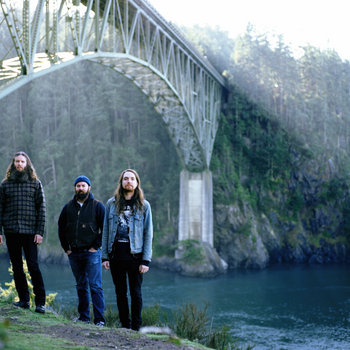

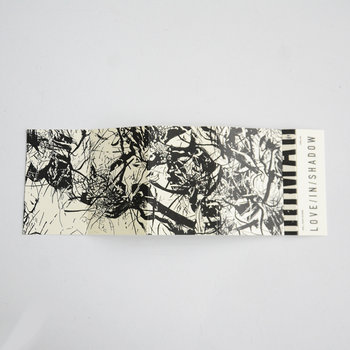
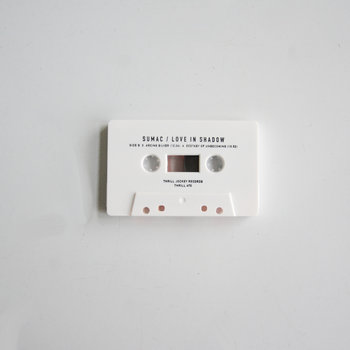
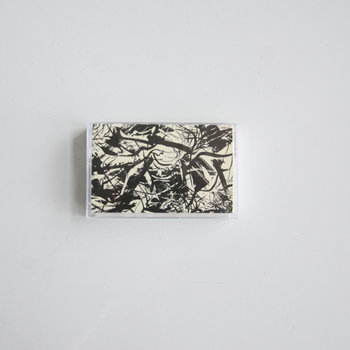

Compact Disc (CD), Cassette




Through his various endeavors, Aaron Turner has had a profound impact on modern metal. Isis, the band he led from 1997 to 2010, helped set the template for post-metal, while his Hydra Head imprint provided a home for landmark works by Botch and Discordance Axis. His latest project, SUMAC, sees him rooted in the heaviness for which he is renowned while engaging in freer, more improvised explorations. “Up ’til my early teens, jazz was largely just my ‘parents’ music,’” he says. “Then I had an experience listening to [John Coltrane’s] Blue Train in headphones one night while lying in bed, and the solo from the title track hit me with an undeniable force of startling beauty and soul—it just opened up the song for me, and from there the album, and then by extension the wider universe of jazz—which is still unfolding for me in the present day. Though probably unconscious at the time, I think I was compelled by the mixture of structure and improvisation, refrains that were tightly woven and then departures from that framework that lead into often unrestricted and elastic terrain. The harmonic elements of the music were interesting as well—what I later learned was modal playing and soloing, drew me in—very different from what I was hearing in the rock and metal music I listened to, as well the more conventional music that dominated the musical landscape and surrounded me at the time.”
Improvisation began to creep into Isis live sets, and Turner continued to explore the practice with projects like House Of Low Culture and Lotus Eaters. It was with SUMAC, however, that this became a more conscious and fundamental tenet, but while Turner cites jazz as a key influence when it comes to SUMAC’s approach to improvisation, he is also mindful of the genre’s deep history and heritage. “I have a lot of reverence and respect for jazz, its cultural and political significance, and the fact that it was born from the ideas and experience of Black Americans,” he says. “Because of that I would hesitate to call anything I/we do ‘jazz’. We are influenced and inspired by jazz, and acknowledge our debt to it. Of course there have been some significant contributions to the realm of jazz by folks who were/are not Black Americans, but their role in it has been secondary in most instances.”
Dazzling Killmen
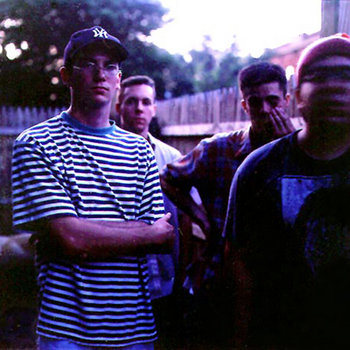



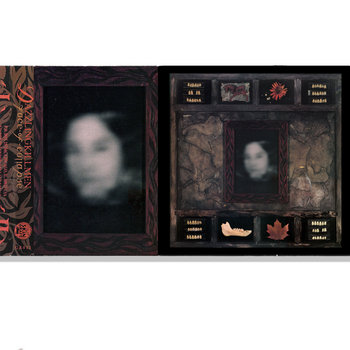



Cassette, Compact Disc (CD), 2 x Vinyl LP




The late ‘80s and early ‘90s saw the emergence of several neither-fish-nor-fowl acts whose difficult, cerebral music often fell between stools. Like Gore, Zeni Geva, or Blind Idiot God, Missouri’s Dazzling Killmen were a product of the hardcore scene, but their keen grasp of rhythm, dynamic, and musicality placed them at a curious remove that ultimately helped seed nascent genres like post-metal and math-rock. Every dizzying movement seemed to cause them pain and anguish, and their legacy can be felt in recordings by the likes of Craw, Coalesce, and Converge. Three members of the band were serious musicians with a knowledge of jazz, but this wasn’t the case across the board—something that, perhaps, fed into the tension that drove their music. “I never went to school to study music, but the other three guys definitely fit that bill,” says singer/guitarist Nick Sakes. “I’m self-taught and still don’t know the notes on the neck of a guitar. I just go by feel and what sounds cool to me.”
Sakes cites the likes of Saccharine Trust, Killdozer, and Black Flag as sources of inspiration, and admits he’s never been much of a “jazz guy.” That said, he certainly reaped the rewards of playing with studious types who were deep into their jazz: bassist Darin Gray, drummer Blake Fleming and, later, guitarist Tim Garrigan, who played in a jazz trio with Gray and Fleming, and would join Dazzling Killmen full-time after guesting on their “Medicine Me” single. “Darin said he was playing in some jazz combos at school with a kid that was a pretty incredible player but wasn’t sure if he’d be a good fit or would even like this twisted rock music we dabbled in,” says Sakes of the band’s early days. “After some consideration we got together with Blake and boy oh boy was it good. It was my first experience playing in a rock band and it was with those two guys! I was spoiled rotten.”
Forbes Graham
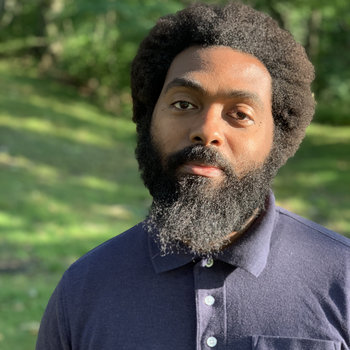

Forbes Graham is a musician who has managed to straddle multiple realms. Over the years he’s leant his skills to the splenetic hardcore of Amalgamation, the glowering progscapes of Kayo Dot, and the merciless, nerve-shredding brutality of Ehnahre. He is also a composer, trumpet player, and electronic musician whose ambitious, exploratory work encompasses jazz, improv, and sound art. “The first clear link between jazz, hardcore and heavy metal is that their musical lineage all come from the blues,” he says. “In my opinion, it’s important that people understand this. Each genre is in some way about seeing the world in a different way than it is presented to us.”
Inspired as much by borrowed Iron Maiden and Megadeth tapes as a concert by the high school jazz band he saw while in junior high, Graham made it into that same high school jazz band at roughly the same time he was discovering punk rock and riot grrrl. “The worlds bled together pretty quickly once I heard of Atheist, who described their music as ‘death jazz,’” he says. “I was immediately hooked. They were the band that truly inspired me to become a musician. In high school I was very motivated by the idea of death jazz.” While some of the interviewees featured here shudder at the naivety with which they name-dropped jazz greats as callow teens and 20-somethings, Graham looks back at his formative years with a sense of balance. “I’m always learning about music and sound,” he says. “There is a lot that I don’t know. But at 18, I had an understanding of what jazz was, because I learned from [Montgomery Blair High School jazz band teacher] Ray Harry and I felt that I was a part of something bigger than myself. This music is part of my culture and my heritage. Which doesn’t mean that I think it has to be a certain way, but I know I pass through doors that others opened for me.”
Iceburn
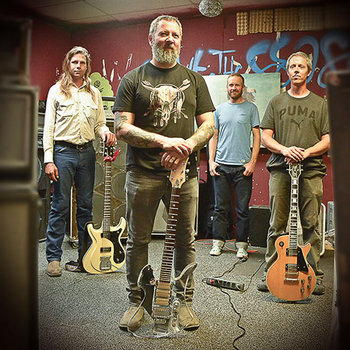

Vinyl LP

Never a particularly good fit for Victory Records at a time when the label was releasing material by Integrity and Earth Crisis, Iceburn’s tangled mix of jazz, prog, and heavy metal seemed enough to dampen even the most ardent straightedge firestorm. Close allies with Engine Kid (founding member Gentry Densley would go on to collaborate with Greg Anderson in Ascend), the band got weirder and wilder as they progressed before falling into stasis. Asclepius, the band’s first album in some 20 years sees the band on ferocious, hedonistic form as they depart from the improvised noise of their latter years and rediscover their love of the riff.
“I started getting into weird jazz stuff at school,” explains Densley of the path that took him beyond Celtic Frost, Bad Brains, and Corrosion Of Conformity. “A teacher had played with Don Ellis, who was obsessed with odd meters. Then the local punk record shop guy turned me on to Mahavishnu. On tour with Alloy, Pete Hines who also drummed for the Cro-Mags, turned me on to a bunch of stuff, King Crimson’s Larks’ Tongues being a main one. From there, man, I just got into avant-classical stuff; traditional jazz and free jazz; and the whole European improv scene. I mean, there’s so much damn music out there.” In terms of the commonalities linking these various worlds, Densley is philosophical. “For me there are links in the energies and expressions,” he says. “Giants like Miles Davis or Mingus were pretty badass, and then you get to guys like Frank Lowe or Peter Brötzmann who are just screaming through their saxophones and I just ate that up!”
Pyrrhon




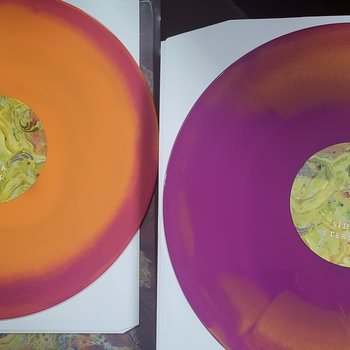



2 x Vinyl LP, Cassette, Compact Disc (CD), T-Shirt/Apparel, T-Shirt/Shirt




Pyrrhon are at the forefront of a wave of queasy, difficult death metal shaking the genre up as though it were a snowglobe full of shit. Abscess Time, their latest full-length, is a definite high watermark—a mix of savage technicality and improvised lurch that hits and twists like a rusty knife to the guts. “In terms of a crossover between metal and jazz, I began to have this vague idea of incorporating improvisation into metal during my high school years,” says guitarist Dylan DiLella. “Pyrrhon started dabbling with improvisation on our first full-length. That side of our style was pretty developmental at that point, but it was an important stepping stone. The Mother Of Virtues was where I really felt like we were bringing something unique to the table in terms of using improvisation in metal. It became a tool for destruction, and gave our style an unhinged quality that it previously lacked. What Passes For Survival has a manic, scattershot use of improv, which contrasts nicely with the psychedelic, noisy improvisational sounds on Abscess Time.”
This move towards improvisation is perhaps exemplified by DiLella’s solo album, Human Shield—a record that has also seen him shift away from the genres that initially opened the doors to improv for him. “My style as a solo guitarist has gradually moved from modern jazz and classical toward the spectrum of experimental, harsh noise, and drone,” he says. “I also tried to let the sounds of the guitar breathe, concerning myself more with tone and atmosphere. It was a really cathartic recording experience.”
Thoughts Of Ionesco
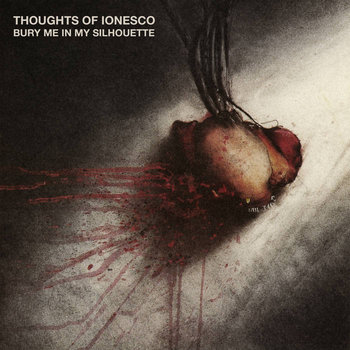

The latter half of the ’90s saw a groundswell of forward-thinking, musically-literate metalcore bands gaining wider recognition. These were jagged, dissonant types of groups who understood why Naked City and OLD sat next to Carcass and Napalm Death on the Earache Records roster—bands who perhaps helped bring Rorschach’s King Crimson cover to its logical conclusion. While the likes of Converge and The Dillinger Escape Plan were never shy about their non-punk influences, it was a band of Detroit underdogs who really put their money where their mouths were. Thoughts Of Ionesco made obtuse music that was both pained and painful, and their history of self-sabotage often seemed to overshadow their music. Beyond punishing brutality, however, they strove for the spirit singer/guitarist Sean Madigan found in the jazz records he obsessively listened to. “I was 18 when Thoughts started playing shows and recording,” he says. “It was youthful naivety to even talk about ‘jazz,’ because by now I have a deep respect for what that means. But, yeah, it was an influence that started coming in mostly just because I listened to free jazz all the time. I had a few old Impulse!-era Coltrane compilations when I was in high school. I’d play those and just feel certain that there were answers in that music; it literally felt holy to me.”
Jazz influences initially crept into the band by way of strange chord shapes and tunings, and an insistence on live, one-take recording sessions. Madigan feels it was bringing drummer Derek Grant into the fold that really helped Thoughts Of Ionesco come close to reaching their potential, given his ability to improvise and literally never play the same thing twice. “If there was anything at all that was special about that band it was a few of those shows where the improvisations came off,” says Madigan. “They could be terrible, but when they worked it seemed like you could just ride the feeling until it was done with you, so to speak. I’d improvise stream-of-consciousness lyrics during those parts. Derek’s an actual virtuoso and could really go with it, and I was getting better at emoting on the guitar, so it would get wild. There was a physical aspect, too, where the trance would get bodily and I’d get so worked up I’d get the white-light tunnel vision sort of experience. I mean, that happened a few times. It could get into a real primal therapy sort of situation and I do think that had been the ultimate goal, anyway. But the jazz thing of just going ‘fully into the moment’ was the vehicle for all that—like, ‘Fuck chords, let’s just ride the snake.’”
Titan To Tachyons
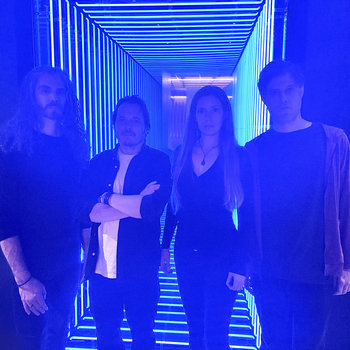
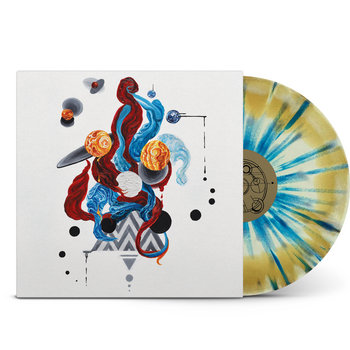
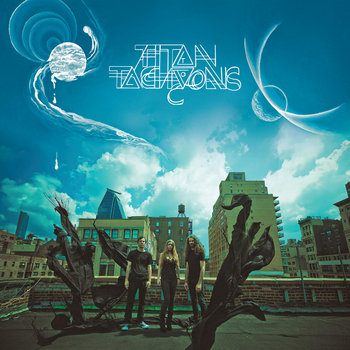
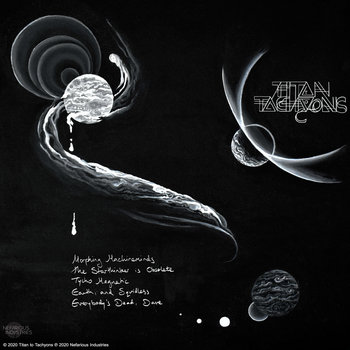
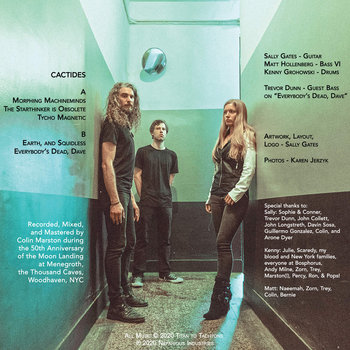



Vinyl LP, Compact Disc (CD)




Between them, this New York trio feature players who’ve served time with the likes of Orbweaver, Secret Chiefs 3, and John Zorn—knowledge that makes the perfect backdrop for their surrealistic blend of metal, prog, and quicksilver improvisation. “My first taste of genre-mashing was the Dillinger Escape Plan‘s EP with Mike Patton,” says guitarist Sally Gates of her slippery descent into heavy metal’s weirder byways. “Mr. Bungle further cemented this concept for me, and then once I discovered John Zorn, you learn that basically anything is possible.”
Attracted by the free, improvisational qualities of jazz, Gates saw this as a way of breaking free of heavy metal’s grid system and engaging more fully as both a listener and a player. “Jazz is something I became interested in much more recently and in particular once I moved to NYC as you’re surrounded by it,” she says. “I was working at a music school and also starting to jam with more people, so I learnt pieces by Miles Davis, Coltrane, Chick Corea, and Wayne Shorter. Amy Winehouse was one of the first musicians that got me interested in the genre, as she had crossover elements of jazz combined with soul and R&B, which sounded completely different and had more depth to it than other ‘pop’ music I’d encountered. Bands like King Crimson, Rush, Mr. Bungle, and Secret Chiefs 3 were highly influential to my songwriting and the manner of music I wanted to portray. The latter two were a gateway to Zorn’s music, which was completely eye-opening. It was a huge boost of confidence to see that you can basically make any musical idea work, and that staying true to your own vision yields the best results.”
Blind Idiot God


Musically omnivorous, Blind Idiot God’s hyper-virtuosic sound takes in jazz, dub, metal, classical, hardcore and pretty much anything else that strays into its greedy path. Formed in St. Louis, Missouri in 1981, the band played with the likes of Black Flag, Minutemen, and Die Kreuzen and signed with the legendary SST Records for their first LP, before going on to collaborate with the likes of John Zorn and Bill Laswell as their ideas and ambitions exploded ever outward. As is often the case, such vision was not always greeted with acclaim, or even politeness. “Zorn took a lot of flack for using us as a backing band at the Timezones festival in Bari, Italy,” says guitarist and founding member Andy Hawkins. “And again during his Coltrane tribute show with us, him and Tim Berne at CBGBs. He told me he got death threats after that one. When we played in Hamburg, Germany the first time, skinheads showed up and yelled at us to stop playing the loud stuff because they wanted to hear the dub. Some of the more dedicated punk fans hate the dub stuff, it’s all over the place.” The band resurfaced in 2015 after a protracted absence, unleashing the stunning Before Ever After—a looser, freer, more improvisational record than its predecessors—into what one could only hope would be a more accepting and receptive ecosystem.







